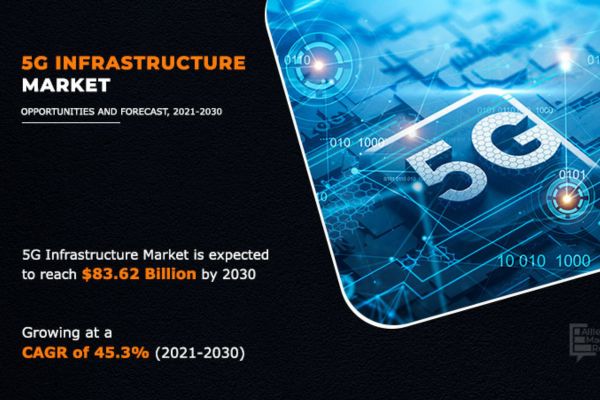In the last few years, the development of 5G infrastructure, including radio access network (RAN), transport technologies, and core, is expected to revolutionize connectivity by providing high throughput, high mobility, low latency, and strong connection capabilities. This advancement is anticipated to create numerous business opportunities for telecom operators, investors, enterprises, and customers. By providing advanced connectivity, 5G facilitates collaboration across various industries such as finance, retail, healthcare, and transport, thus improving service distribution to businesses and customers.
Despite the challenges induced by the pandemic, which delayed the implementation of 5G in several countries, including France, Spain, Austria, India, and the U.S., the industry has shown resilience. Some vendors accelerated their 5G rollout plans between 2020 and 2021, highlighting the technology’s extensive capabilities across various industries even during global disruptions. However, these delays have limited the overall adoption of the 5G network.
Furthermore, the growth of innovative technologies such as virtual and augmented reality, AI, the Internet of Things, and connected cars highlights the importance of a robust and effective communication infrastructure. This need is fueling the global adoption of 5G network solutions. On the other hand, manufacturers of hardware are focusing on producing devices that support 5G, showcasing the expanding capabilities of the network. According to Global System for Mobile Communications Intelligence, new 5G networks have been launched in over 30 countries by 2023, with the number of 5G connections expected to double by 2025.
Network slicing technology accelerates 5G network adoption
Network slicing utilizes network virtualization to divide a single network connection into multiple virtual connections, each customized for different types of traffic. This approach enables mobile operators and telecom providers to allocate network resources based on specific customer requirements, such as IoT factories, smart homes, and connected cars. By establishing dedicated virtual networks for various use cases, service providers can address a range of business needs, strengthen security for essential services, and improve reliability. According to Global System for Mobile Communications Intelligence, the adoption of network slicing is gaining momentum in the global IoT network, facilitating the connection of numerous devices and driving the expansion of the global 5G infrastructure industry.
Tesla advances toward 5G-enabled electric vehicles and Optimus
Tesla aims to innovate by integrating 5G technology into their electric vehicles and humanoid robot, Optimus. This move is intended to enhance connectivity and enable more advanced features in future Tesla models such as the Model S, 3, X, Y, and Cybertruck. Prioritizing the establishment of a seamless private 5G network infrastructure, the company highlights its commitment to optimizing communication speeds and reducing latency to maximize the performance of vehicles and robots at Tesla premises.
In addition, Tesla is improving connectivity and making notable advancements in autonomous driving technology with their Full Self-Driving (FSD) software. They are offering free trials and ensuring that new customers get to witness its capabilities firsthand, preparing for a future where autonomous driving technology is more commonly used.
Tesla’s exploration into robotics with Optimus is also progressing, as evidenced by recent job postings focused on field testing and developing user guides. This initiative highlights Tesla’s commitment to integrating advanced robotics into everyday applications, offering innovative opportunities in automation and support. As a result, Tesla’s initiatives in 5G integration, autonomous driving, and robotics showcase their leadership in shaping the future of transportation and technology.
To conclude, the evolution of 5G infrastructure, fueled by innovations such as network slicing and integration into industries like automotive and robotics, shows its transformative potential across industries. Despite global challenges, advancements by companies such as Tesla highlight a future with improved connectivity and technology integration.
Short Description:
The 5G infrastructure sector is rapidly expanding, driven by its high throughput, low latency, and versatility across industries such as automotive and robotics. Innovations such as network slicing and integration into advanced technologies are anticipated to revolutionize connectivity, offering profitable growth opportunities for the industry in the coming years.
𝑨𝒓𝒕𝒊𝒄𝒍𝒆 𝒘𝒓𝒊𝒕𝒆𝒓: Harshada Dive
Author’s Bio: – Harshada Dive is a computer engineer who loves to experiment with trending topics and is passionate about presenting these topics creatively to her audience. When Harshada’s not writing, she is either gardening or listening to inspirational podcasts.


















